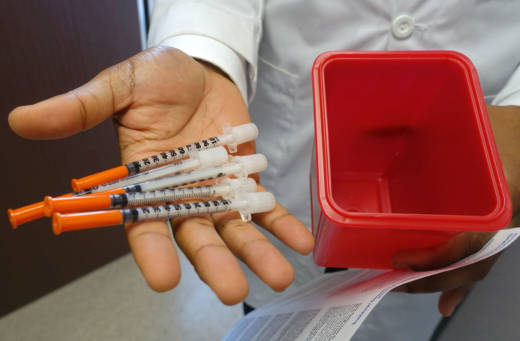Back in January, a permit was denied for the only needle exchange in Orange County. The reason? Santa Ana officials cited health concerns over needles scattered on the ground in the Santa Ana Civic Center, where the exchange operated a permanent location, and even among stacks of books in the city library.
But shutting down the Orange County Needle Exchange Program (OCNEP) didn’t stop the use of needles. Advocates say it may have even forced some intravenous drug users to share them or use dirty ones, increasing the likelihood of blood-borne illnesses like HIV and hepatitis. In its two years of operation, OCNEP gave out about 2 million clean needles and provided safe disposal for used syringes.
Since then, the exchange’s co-founder, Dr. Kyle Barbour, has been trying to work with the city of Santa Ana for a solution. But in the meantime he and his colleagues have taken a different tack — if they cannot operate out of the Civic Center, they’ll take the needle exchange on the road.
Mobile needle exchanges can be found in big cities across the United States. In California, they operate in cities like San Francisco, Los Angeles and Oakland. But this would be the first of its kind in Orange County. According to Barbour, a mobile exchange might be even better for the organization.
“It’s especially important to be mobile in a suburban county like Orange,” says Barbour. “The reason for that is that a lot of the clients that we serve are very, very poor. There’s almost no public transportation infrastructure here, so getting from place to place is really hard.”


